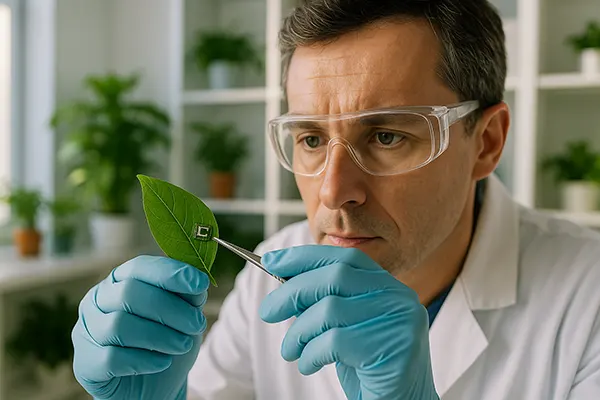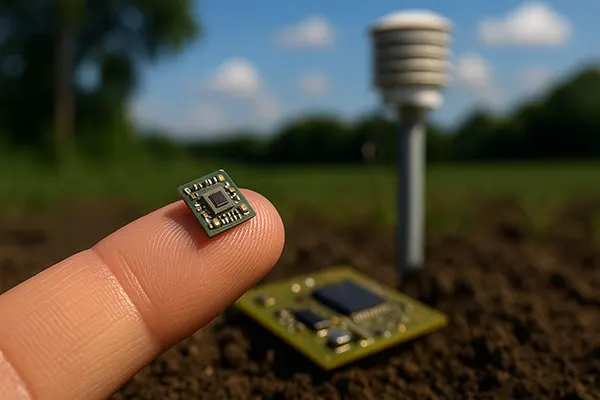
Smart Dust Sensors: How Microscopic Electronics Will Transform Environmental Monitoring
In recent years, the concept of smart dust sensors has evolved from speculative research into a tangible innovation with real-world applications. These miniature devices, smaller than a grain of sand, promise to revolutionise how we monitor the environment. By combining sensors, communication modules and microprocessors in a single speck, they can detect pollutants, temperature, humidity and even radiation in real time. As of June 2025, active development is underway in Europe, the US, Japan and South Korea, where smart dust is being tested in both urban and industrial areas.
Environmental Applications of Smart Dust Technology
Smart dust sensors hold immense potential for air quality monitoring in densely populated cities. Unlike traditional stationary systems, they offer mobility, granular precision and wide area coverage. These sensors can be deployed across city blocks, forests or rivers to track pollutant levels such as nitrogen dioxide (NO₂), ozone (O₃) and particulate matter (PM2.5). Data collected from thousands of sensors allows scientists to create detailed pollution maps that inform public policy and emergency responses.
In agriculture, smart dust can monitor soil health, moisture and chemical levels in real time. Farmers in Denmark and the Netherlands are already participating in pilot projects that use these sensors to optimise irrigation and fertiliser application. By understanding environmental conditions at the micro level, agricultural efficiency can be dramatically improved while reducing environmental harm.
In industrial settings, these sensors provide an early warning system for hazardous leaks or emissions. For example, in 2025, a German chemical plant began using smart dust to detect airborne ammonia leaks before they reached dangerous levels. This proactive approach enhances safety and helps prevent large-scale environmental contamination.
Advantages over Traditional Environmental Monitoring Tools
One major advantage of smart dust is its scalability. Because each sensor is extremely small and inexpensive, thousands can be deployed without significant infrastructure investment. This allows for widespread and dynamic monitoring that static systems simply can’t match.
Energy efficiency is another strength. Modern smart dust sensors use ultra-low-power microelectronics and can be powered by solar energy or ambient vibrations. As of June 2025, several commercial prototypes achieve operational lifespans of up to six months on a microbattery or energy-harvesting module.
Smart dust networks can self-organise and relay data through mesh communication protocols. This means the failure of a single unit won’t compromise the entire system—data will reroute through alternative paths. This resilience is critical for deployment in harsh or remote environments such as deserts, oceans or mountains.
Challenges and Risks of Deploying Smart Dust Sensors
Despite their potential, smart dust systems face a number of technological and ethical challenges. One major concern is data security. With thousands of interconnected nodes, the system is vulnerable to interception and tampering. As of mid-2025, several research teams are working on encryption standards tailored for ultra-low-power devices.
Another challenge lies in the retrieval and degradation of sensors. Many smart dust particles are designed to be disposable, raising concerns about electronic waste and contamination. Some groups are now testing biodegradable versions using materials like cellulose nanofibres and silk proteins, though commercial viability remains uncertain.
There are also privacy implications. In densely monitored areas, these sensors could unintentionally collect data on individuals’ movements or behaviours. Transparent usage policies and strict regulatory oversight are essential to prevent misuse of environmental surveillance data.
Current Research and Development Initiatives
As of 2025, universities and startups across Europe, the United States and Asia are competing to refine smart dust technology. Notably, the EU-funded SMOKE project is trialling smart dust deployments in high-risk industrial zones across Spain and Poland, focusing on detecting combustion byproducts in real time.
In the United States, NASA is experimenting with smart dust aboard weather balloons and unmanned aerial vehicles (UAVs) to gather high-altitude climate data. The use of lightweight, autonomous sensors could make atmospheric research more cost-effective and accessible.
South Korean manufacturers have also entered the field with advanced fabrication techniques for MEMS (micro-electro-mechanical systems), enabling more compact and energy-efficient dust sensors. These are expected to enter commercial production by the end of 2025.

Future Potential and Broader Impacts
The future of smart dust lies in integration with other emerging technologies. Coupled with AI, these sensors can be part of self-learning systems that detect anomalies and make decisions without human intervention. This has vast applications in climate change monitoring, disaster management and urban planning.
Smart dust may also be used in oceanographic research. By developing waterproof variants that can withstand pressure and salinity, researchers could study underwater ecosystems and pollution flows. Japanese marine institutes are exploring this potential in coral reef monitoring as of June 2025.
Finally, the technology’s accessibility is increasing. As manufacturing costs decline, it becomes feasible for schools, community groups and local governments to adopt smart dust systems for their own monitoring initiatives. Democratizing environmental data collection could empower more stakeholders in the fight against pollution and climate change.
Regulatory Frameworks and Ethical Deployment
To ensure responsible adoption, governments and international bodies must establish clear standards. These should cover sensor calibration, data transparency, waste disposal and individual rights. The European Environment Agency is leading efforts to draft such protocols by late 2025.
Engaging the public is also vital. Open-source software and citizen science programmes can help communities understand and influence how sensors are deployed. Building trust around data collection is key to long-term acceptance and cooperation.
Smart dust has the potential to be a powerful tool in addressing global environmental challenges. But it must be guided by ethical principles, regulatory foresight and transparent practices. Only then can this microscopic technology fulfil its promise at the macroscopic level.
